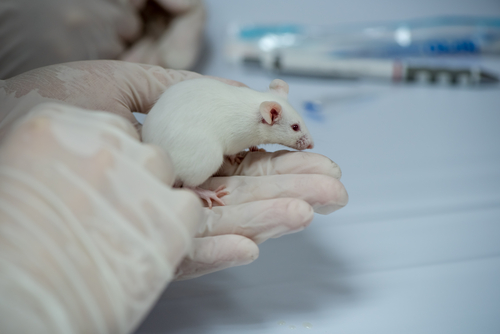Scientists Create New Mouse Model for Atypical Hemolytic Uremic Syndrome

Scientists have created a new mouse model for atypical hemolytic uremic syndrome (aHUS) that fully mirrors the clinical symptoms of the disease seen in human patients.
The animals, which harbor a genetic mutation in the C3 protein, may be used in the future to test new therapeutic agents for aHUS and other complement system diseases, the researchers said.
Their study, “Hyperfunctional complement C3 promotes C5-dependent atypical hemolytic uremic syndrome in mice,” was published in The Journal of Clinical Investigation.
aHUS is caused by the progressive destruction of red blood cells due to a malfunction of the complement system — a set of more than 50 blood proteins that form part of the body’s immune defenses. Damaged red blood cells can aggregate and form clots that clog the kidneys’ filtering system, potentially leading to kidney failure.
In humans, this disorder is normally associated with loss-of-function mutations in complement regulator proteins, or gain-of-function mutations in complement activator proteins, such as the C3 and C5 proteins.
“The historical work in animal models, coupled with the successful use of C5 inhibitors in aHUS patients, lays the foundation for our current understanding of the pathogenesis (disease development) of aHUS,” the researchers wrote. “While previous and existing mouse models based on FH (factor H) functional deficit display some of the characteristic pathologies of aHUS, reflecting potential subsets of the disease, they do not entirely reproduce the clinical observations.”
In the study, researchers at Newcastle University and their collaborators created a new aHUS mouse model carrying a gain-of-function (D1115N) mutation in the complement activator protein C3 in an effort to fully reproduce the clinical features of the disease found in human patients.
Genetically-engineered animals carrying two copies of the mutated C3 protein (C3KI mice) developed spontaneous chronic thrombotic microangiopathy (clotting of small blood vessels), hematuria (blood in urine), thrombocytopenia (low platelet count), hemolysis (breakdown of red blood cells), and high creatinine levels (suggesting kidney failure).
As expected, C3KI mice with active disease had low levels of C3 protein in the plasma and showed accumulation of C3 fragments and C9 in the kidneys.
Treatment with C5 inhibitors, or its genetic deletion, protected C3KI mice from clotting of blood vessels and aHUS. C5 is a protein normally activated downstream of C3 in the complement system signaling cascade, and has been used as a therapeutic target in the clinic — for example, Soliris (eculizumab) — to prevent the pathway’s over-activation.
“In summary, our mouse model of aHUS, engineered by using a single point mutation in C3, recapitulates the clinical phenotype (symptoms) found in humans,” the researchers wrote. “This C3 mutation results in systemic complement activation and endothelial (blood vessels) dysfunction,” culminating in kidney failure. (A point mutation is a single nucleotide mutation that may or may not change protein composition).
“Our model provides the opportunity to investigate the roles played by various players downstream of C3 activation and is a test bed for future complement therapeutics,” they said. “Developing a therapy to restore complement homeostasis (equilibrium) would, in addition, be transferable to several other endothelial damage-mediated diseases for which therapy remains an unmet clinical need.”






